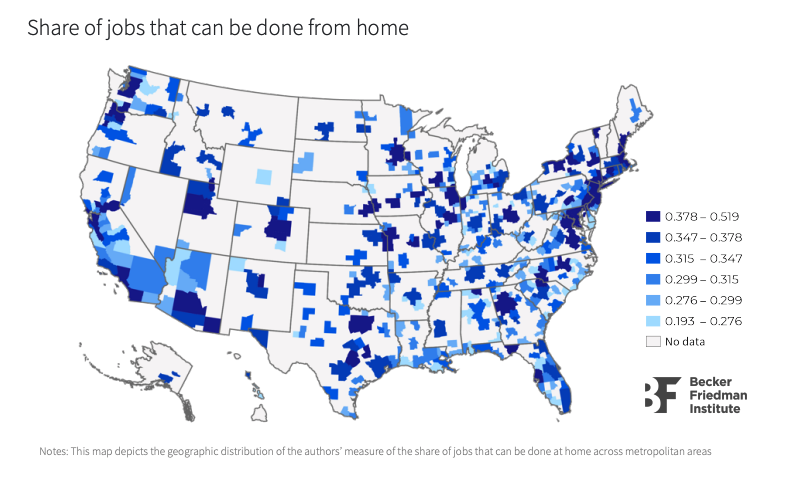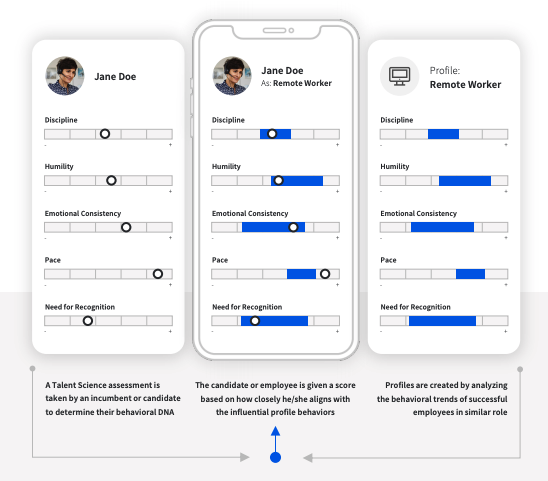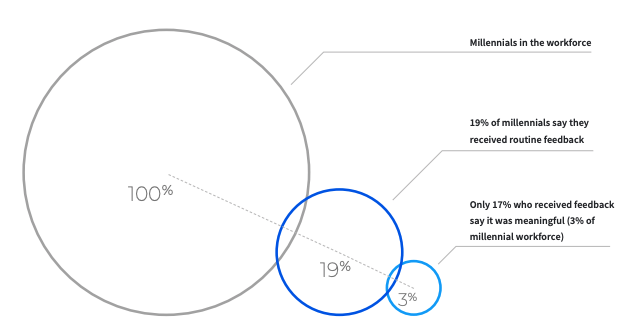Agencies are currently maintaining critical systems and operations with little to no physical presence of their workforce. And as the COVID-19 pandemic progresses, we learn that the way we mork may permanently change, even after the pandemic. To keep productivity and morale high, agencies should consider creative approaches to their remote work strategy.
 The pandemic has accelerated the need to embrace novel strategies to preserve productivity while preparing for worst-case scenarios. By taking advantage of this time of change to embrace innovative technologies, ideas and best practices, agencies can succeed now and beyond the crisis. This best practices guide from Infor outlines tangible suggestions about what agencies can do to respond to the current crisis conditions while laying foundations for the future.
The pandemic has accelerated the need to embrace novel strategies to preserve productivity while preparing for worst-case scenarios. By taking advantage of this time of change to embrace innovative technologies, ideas and best practices, agencies can succeed now and beyond the crisis. This best practices guide from Infor outlines tangible suggestions about what agencies can do to respond to the current crisis conditions while laying foundations for the future.
Below we layout steps from the guide to creating a sustainable remote workforce strategy:
Step 1: Consider your culture
This starts with an open-mindedness about how work is accomplished, including the consideration of alternatives to the traditional workday. The traditional beliefs and behaviors that support organizations today simply may not work in the new normal of tomorrow. Business leaders need to recognize the cultural nuances of their organization, and how they should be shaped to survive and thrive in a dynamic environment.
“The crisis accentuates what remote companies already understand—that work does not need to happen at the same time,” says Prithwiraj Choudhury, Lumry Family Associate Professor in the Technology and Operations Management Unit at the Harvard Business School. “People can wake up in different time zones and cities, open documents, and get going.”
Rethink the conventional Monday through Friday, 9-to-5 paradigm. Allowing individuals to work alternative hours from any location in the world provides access to a much larger, more diverse talent pool, and a wider assortment of ideas and perspectives. A successful remote work culture requires a foundation of trust, accountability, and open communications.
Step 2: Identify realistic roles
In the U.S., 34% of jobs can be done remotely, according to a recent study by the University of Chicago. The challenge then is determining which jobs can be done remotely and which jobs need to be done on-site.
One exercise to undertake when considering whether to allow a specific role to be remote is to break down the position into its component tasks and responsibilities. Frequently, there are a few elements that would be difficult to do remotely, but if they were stripped out or moved to a different role, the feasibility increases. In other cases, it may be the business model that should be evaluated.
Step 3: Pick the right people
When the right person is selected for the job, work production has the potential to increase up to 300%, according to Lighthouse Consulting Services. The behaviors and qualifications required for successful remote work often differ from work conducted in an office setting.
Infor’s team of industrial and organizational psychologists investigated behaviors associated with successful job performance. This data was compiled from Infor customers across a variety of industries to create an aggregate profile for remote workers. Using this profile, Infor identified the characteristics that appear to be most associated with success in remote work:
- Discipline
- Humility
- Emotional consistency
- Pace
- Need for recognition
Companies using Talent Science®, Infor’s predictive talent analytics solution, have implemented similar profiles and seen compelling reductions in turnover due to their knowledge and understanding of the behavioral DNA of each individual in their organization. This information can be used to personalize experiences for employees regardless of role or location.
Step 4: Tap new technology
Agencies should invest in new digital workforce solutions that make it easier for supervisors to manage remote workers. The move away from the dreaded annual review started long ago, with a new focus on continuous performance engagement in the form of recurrent conversations (frequently enabled by technology).
 “We are now supporting a large, remote workforce and they are just as productive as they are in the office. Payroll is being done remotely and our users are very happy,” said Jim Ollerton, director of IT at Infor customer Elsinore Valley Municipal Water District.
“We are now supporting a large, remote workforce and they are just as productive as they are in the office. Payroll is being done remotely and our users are very happy,” said Jim Ollerton, director of IT at Infor customer Elsinore Valley Municipal Water District.
It takes only a few seconds to use Infor’s Rave application — which can even be done on a mobile device — to recognize virtually anyone in the organization, while the feedback is automatically routed for later use in formal reviews, and promotion and compensation conversations. Another annual ritual that is becoming extinct is the annual survey, as organizations can now send pulse surveys (think “question of the week”). All these technologies should be included in a modern suite of Human Capital Management software.
Simply moving to cloud solutions has proven to be an important benefit as organizations do not need to be physically on-site to maintain servers and systems.
“Data indicates that the remote-work trend in the U.S. labor force is inexorable, aided by ever-better tools for getting work done anywhere,” according to Christopher Mims in the Wall Street Journal.
To explore the full guide with stats, insights from thought leaders and more ways to develop your remote workforce strategy, access best practice guide, Creating a Remote Workforce Strategy, here.
Images credit: Infor





Leave a Reply
You must be logged in to post a comment.